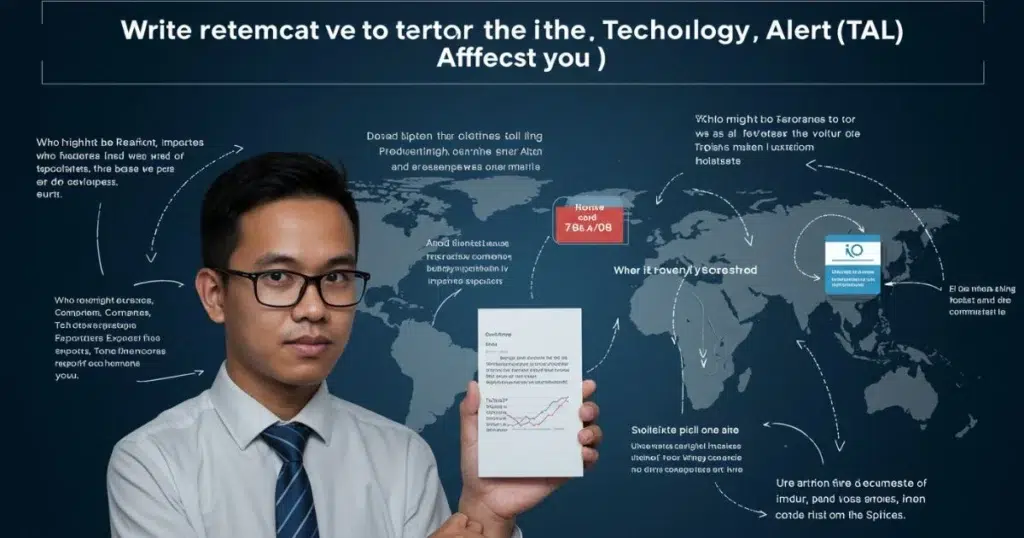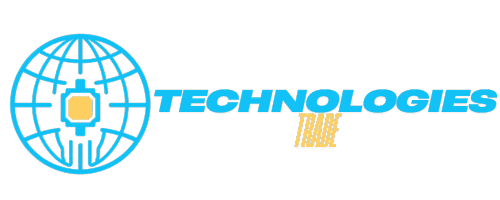What is the Technology Alert List and why does it matter?
The Technology Alert List (TAL) is a tool used by the U.S. government. It screens visa applicants in fields critical to national security. If your work or education matches items on this list, you might face extra checks during your visa application.
The technology alert list was made to protect national security. It lists technologies like robotics, nuclear engineering, and advanced computing. If you work in these areas, you might see delays or need more paperwork. Knowing about the TAL can help you avoid problems.
Key Takeaways
- The TAL targets technologies linked to national security, impacting visa applications in science and tech fields.
- Applicants in restricted areas may receive a 221g refusal notice requiring further documentation.
- Fields like robotics, nuclear tech, and advanced computing are flagged under the TAL.
- Preparing for TAL-related questions or document requests can shorten application timelines.
- This guide explains how the technology alert list visa process works and how to navigate it.
Understanding the Technology Alert List

The technology alert list (TAL) was made to address worries about tech transfers and national security. It was designed to highlight areas where foreign workers might be a risk. Understanding its history helps us grasp its role today.
Origin and Purpose of the TAL
The TAL started after major security breaches. It was created to watch over key tech fields. It first focused on defense areas to stop non-citizens from getting access to sensitive information. This system is still key in checking visas for students and workers in important fields.
How the TAL Has Evolved Over Time
Important updates include:
- Adding new tech like AI and quantum computing
- Changing based on U.S. intelligence threat reports each year
- Looking closer at partnerships between foreign groups and U.S. research places
These updates show how global tech and politics are always changing.
The Technology Alert List in 2025
The technology alert list 2025 now includes areas like hypersonic systems and advanced biotech. A 2024 report from the U.S. Department of State said 43% of new entries are about AI surveillance tools. They say this shows:
“Rapidly evolving threats require constant adaptation of our safeguard mechanisms,” stated a U.S. Department of State spokesperson.
Now, people applying in these fields must give more details about their projects and where they work during visa applications.
How the Technology Alert List Impacts Visa Applications
If you’re applying for a technology alert list visa, like an technology alert list f1 visa, your application might get extra attention. The Technology Alert List (TAL) mainly affects students and researchers in tech fields. F-1 visa holders are often the ones most affected.
During interviews, officers check if your study or job matches TAL categories. This is to see if you’re in a field that needs extra checks.
Studies in robotics, AI, or advanced materials science can lead to a Security Advisory Opinion (SAO). This is a mandatory review by U.S. agencies. It can make your application wait for weeks or months.
An F-1 applicant studying quantum computing might face SAO reviews because of TAL ties. This is just one example.
- Key affected visas: F-1 (students), J-1 (exchange visitors), H-1B (specialty workers).
- SAO steps: Data checks, interagency consultations, and background reviews.
- Possible outcomes: Approval after delays, requests for more documents, or visa denial.
A 2023 State Department report said 40% of F-1 SAO cases were in TAL fields. Consulates might ask for detailed study plans, employer details, or proof you’re not a security risk. Being open about your technical coursework is important to avoid delays.
“Applicants in TAL fields should expect heightened reviews. Preparation is critical to avoid setbacks.”—U.S. Visa Processing Guide, 2024
Plan for longer processing times. Keep records of your academic or work history to answer questions quickly. Knowing these steps helps you prepare for TAL-related checks.
Industries and Fields of Study on the Technology Alert List

Knowing which fields are on the technology alert list is key for students and professionals. The full list isn’t public, but technology alert list pdf summaries and expert analyses point out important areas. Here are the four main sectors under scrutiny:
Conventional Munitions and Nuclear Technology
Fields like ballistics engineering or nuclear fuel cycle research often raise concerns. Specializations in missile guidance systems or plutonium processing may cause visa delays. Government reports say these areas are directly related to national security.
Biochemical and Chemical Engineering
Studies involving bioweapon analogs or toxin synthesis face extra checks. Even fields like enzymatic reaction research could be scrutinized if linked to pathogen development.
Robotics and Advanced Computing
- AI-driven drone systems
- Quantum computing frameworks
- Autonomous weapon control algorithms
These fields are flagged because of their potential military uses. Applicants in robotics design or neural network development need to provide detailed documentation.
Sensors and Laser Technology
Specializations in infrared sensor arrays or high-energy laser systems are flagged. Even academic work on radar evasion techniques may need extra visa review steps.
“Advanced sensor tech with surveillance capabilities remains a priority for screening,” stated a 2024 U.S. Department of State bulletin.
If your studies match these areas, check technology alert list pdf summaries from official sources. Preparing detailed technical explanations and project details can help avoid delays.
High-Risk Countries on the Technology Alert List
Knowing which technology alert list countries get extra checks can help you plan. Visa rules and wait times change a lot based on where you’re from and where you’re going.
Countries with Heightened Scrutiny
Countries under close watch often share certain traits. These include:
- Geopolitical tensions with the U.S.
- History of technology transfer concerns
- Government policies conflicting with U.S. interests
How Your Country of Origin Affects the Process
Your country of origin affects how much scrutiny you’ll get. Citizens from technology alert list countries might face:
- Extended background checks
- Additional interview requirements
- Documentation requests about academic or employment history
Dual nationals must tell all their citizenships to avoid issues.
Navigating Applications from Watch List Countries
Applicants from flagged nations should:
- Apply well in advance of travel dates
- Prepare detailed explanations for technical training or work experience
- Engage professionals familiar with technology alert list visa cases
Being open about your background helps avoid misunderstandings during reviews.
How to Determine if the Technology Alert List Affects You

Figuring out if the technology alert list affects your visa starts with checking yourself. Look at your education or work history against TAL categories. Ask yourself:
- Does your degree program match TAL fields like robotics, advanced computing, or biochemical engineering?
- Have you worked in industries linked to nuclear tech, sensors, or conventional munitions?
- Have you published research or collaborated on projects involving dual-use technologies?
If you’re applying for an technology alert list f1 visa, check your university’s program details. Programs in restricted tech areas, like some engineering or physics majors, might need extra checks. Universities usually list these online, making it easy to compare.
Review official State Department guidelines to confirm if your field aligns with TAL restrictions.
Then, document your work history. Note any jobs or internships in controlled tech fields. For instance, working with laser tech could raise red flags.
Use USCIS’s visa denial data tools to see if similar applicants faced TAL-related delays. Look for patterns in denied cases tied to your field. This helps you understand potential risks before applying.
Lastly, talk to legal experts. Immigration attorneys who focus on F-1 visas can check your case against current TAL criteria. Getting an early review can help avoid surprises during consular interviews.
Steps to Take When Facing a 221g Refusal Related to the TAL
Getting a technology alert list 221g refusal doesn’t mean your visa is gone for good. Here’s how to handle it:
Understanding Your 221g Notice
Read your notice closely. Look for terms like “security review” or mentions of the technology alert list pdf. The U.S. government has official documents, like the TAL pdf, to explain restricted areas. Make a note of any specific codes or instructions for your response.
Documentation to Prepare
- Update your CV with clear details about your academic or professional work, avoiding technical jargon.
- Request a letter from employers or advisors explaining your role and how it relates to non-sensitive work.
- Provide a detailed research summary if your field overlaps with TAL categories.
Timeline and Next Steps
Processing times vary. Simple cases might resolve in weeks, but TAL-related reviews often take 3–6 months. Use official portals to track your case and respond quickly to all requests. Don’t resubmit incomplete materials—each delay adds time.
When to Seek Legal Assistance
If your case involves:
- Extended delays beyond standard timelines
- Unclear TAL-related concerns in your field
- Prior security-related flags
Consult an immigration attorney specializing in technology alert list 221g cases. They can help clarify what you need and support your case during reviews.
Conclusion
The Technology Alert List (TAL) is key for those in robotics, nuclear tech, or biochemical engineering. If you fit into TAL categories or your country is on the list, prepare well. Knowing how TAL impacts visa apps can help avoid delays.
Understanding TAL rules and having all your documents ready can make things easier. If your field or country is on the list, be ready for extra checks. Legal experts can help if you get a 221g notice, making sure you meet U.S. rules.
Security and global work can go hand in hand. Keep up with TAL updates from USCIS to move forward. It’s important to check for changes in the TAL list or fields for future applications.
Being proactive, like documenting your work or studies, can help your case. It’s about finding a balance between security and openness. Make sure you understand TAL rules well to avoid problems.
FAQ
There are no reviews yet. Be the first one to write one.







